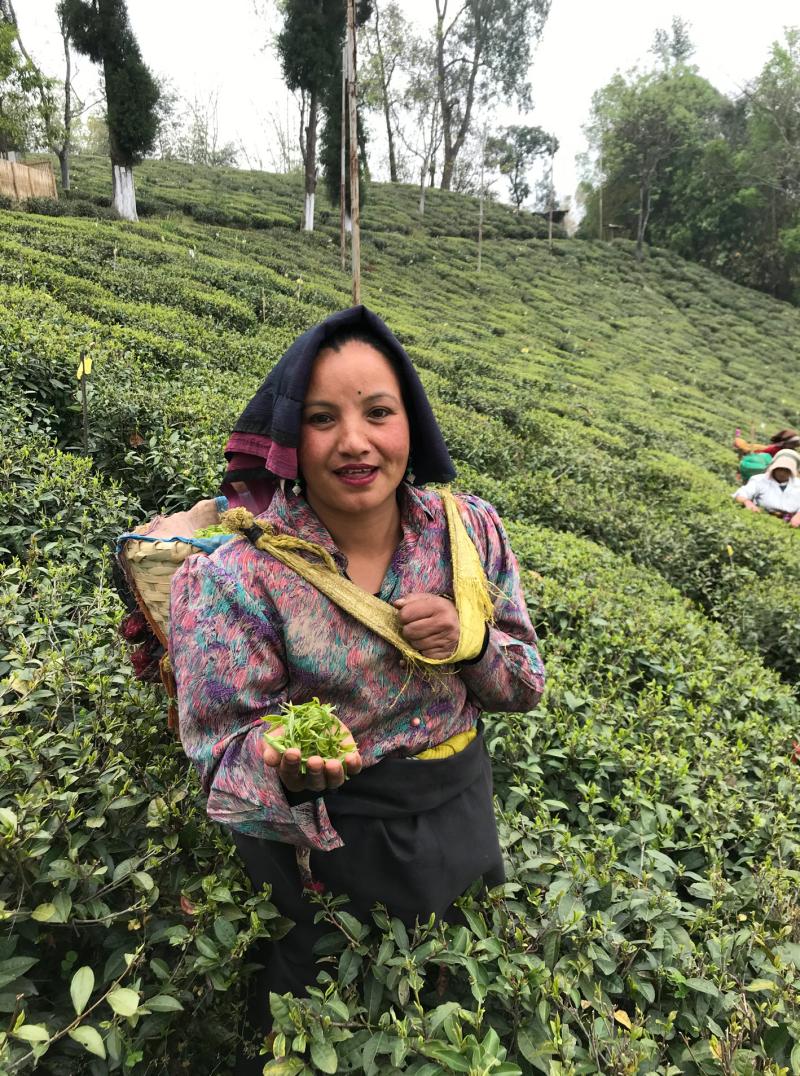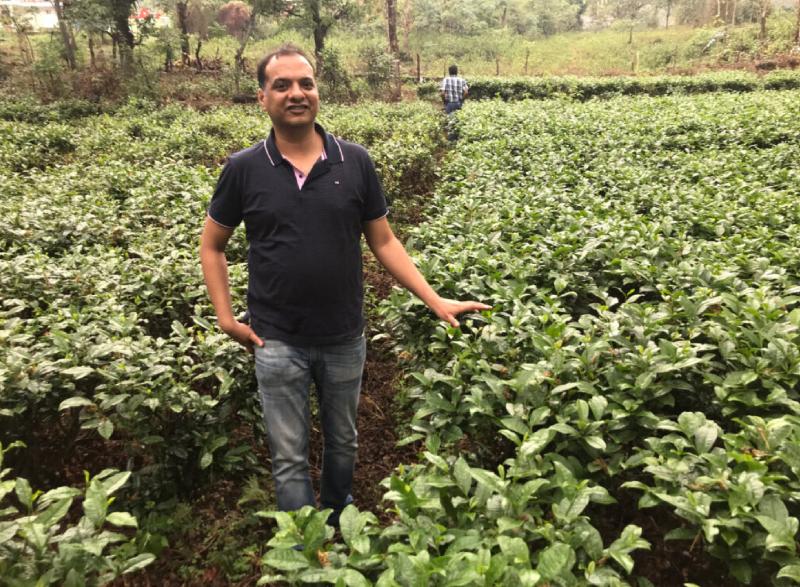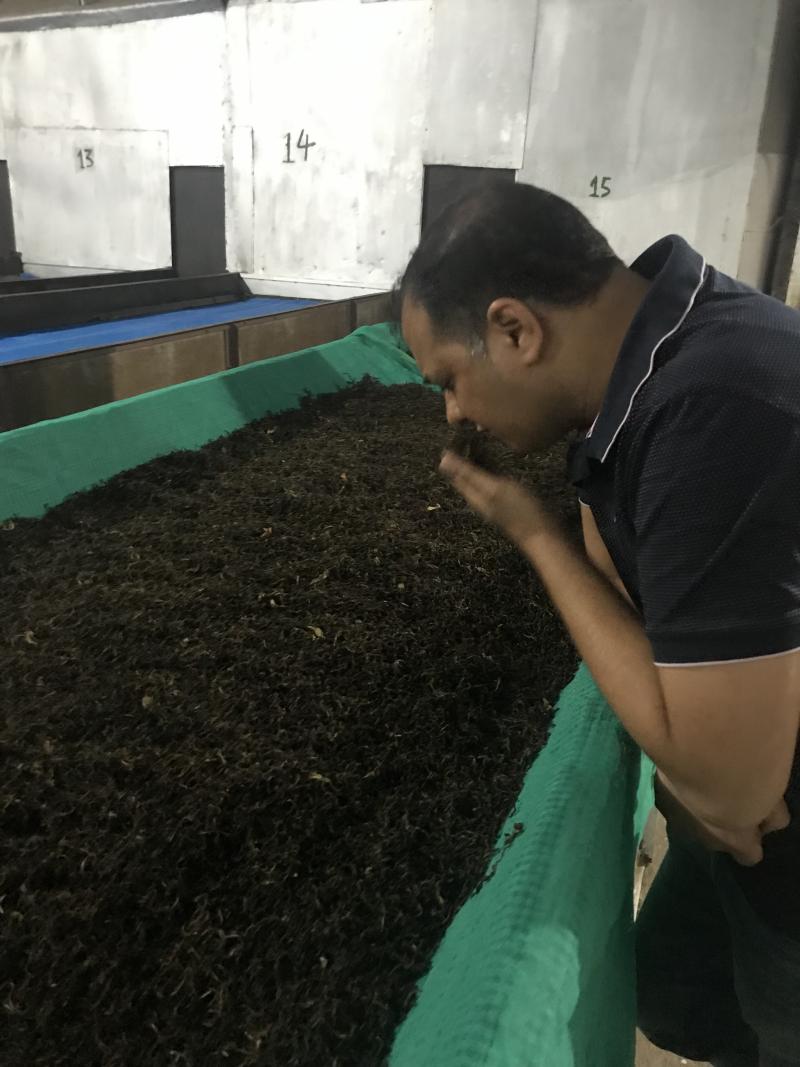Darjeeling, a tea harvesting region in India – known for producing some of the finest teas in the world – is replete with stories of large personalities who ran or owned tea estates. These planters, first British then Indian, were known as the “Burra Sahebs” when estates were run like fiefdoms and the garden managers treated like lords.
Through grit, boldness and sheer will, some have built and lost tea empires with manifold gardens not limited to Darjeeling. Others have made hefty profits selling off their stakes. There are more who continue to doggedly manage their holdings, large and small. However, it’s the owner/managers of the lighter holdings who are working to become the new tea barons, responding to changing tastes and shaping how Darjeeling is viewed as a brand. The traditional tea barons may still drive the industry – but as each day passes, incrementally less so. The times may well be changing.
The Last of the Great Tea Barons
With the rest of his formative generation selling off their interests in tea, Ashok Kumar Lohia stands alone, helming the largest organic tea company in Darjeeling, Chamong Teee Exports Pvt. Ltd.. As a private owner of such a large company, he stands as the last of the great tea barons.
Tall with a beaming smile, Lohia is a proud man – a fifth-generation planter, his pride comes from taking a mainly Assam-based tea company into Darjeeling and developing it into the biggest organic tea company in the region.
Lohia’s Marwari family gained entry into the mainly British business of tea cultivation back in 1865. According to him, at the behest of a visiting Indian army officer stationed in Assam, the Lohias moved from their native village of Rathanghar to the burgeoning state where the British had become engaged in planting tea. The thinking was that the trading family would involve themselves in the economic activity generated by cultivation, processing, and selling/transport of tea.
They opened many shops around the plantations, and soon began to thrive as demand for goods in the growing state was high. They bought much land and rented it out, helping to develop a town around the jungle where they had settled.The laws around usury were not well established then, and the Lohias established their own private bank, lending out the proceeds in collateralized fashion. It was from the default of one of these loans that the Lohias gained their first plantation in 1916. Again, through financial leverage, they acquired a second garden soon thereafter. Similar expansion of payment of tea estates in lieu of loans continued until 1939.
A young Ashok Lohia joined the family business out of college in 1970. At the age of 21, he was put in charge of a plantation right away.
In 1988, two Darjeeling gardens, namely Chamong and Pusong, were dispossessed in favor of the Lohias as payment for loans taken from their then (post-bank nationalization) verboten financing operations. However, from the family’s perspective, the controversy lay not in the nature of the transactions but in accepting Darjeeling plantations as payment in lieu of cash. At the time, leftist agitation by Nepali descendent Ghurka workers was surging, and most in the family felt that it would be impossible to hold on to the new gardens much less manage them.
The young Lohia was attracted to Darjeeling and optimistic to a fault. He took to the challenge with heart, taking the risky decision of waiting out the agitation and eventually converting the gardens from conventional to fully organic plantations in the early to mid-nineties. Rajah Banerjee, owner of Makaibari Estate, had been leading the charge for organic conversion and biodynamic cultivation, and Ashok Lohia was inspired by this large and charismatic personality, with Banerjee riding through his estate atop a horse as though he was some kind prince. The move was also designed to cater to the European market where demand for organic teas was rising.
Rather than be content with the two gardens, Lohia had an eye on expansion, and the clearly had a revenue stream that enabled funding this dream.
In 1996, Tumsong garden was bought. In 2001, three more gardens followed, including Lingia. During that period, Lohia was elected chairman of the Darjeeling Tea Association, which gave him a big picture view of Darjeeling. His role as a leader in the industry had begun.

“What I observed,” said Lohia, “was that even after the turn of the current century, authentic high quality Darjeeling tea was not being sold on the world market, with the exception of a few low quantity high priced selections. Almost everybody was blending some other origin tea and selling it as Darjeeling.”
So, Lohia and his peers decided to protect the Darjeeling name by instituting the Geographic Indication (GI) tag on Darjeeling tea, in an attempt to rid the global market of this sham Darjeeling. The GI tagging meshed with other agreements signed by India with the WTO to fully protect Darjeeling tea.
Six other gardens were bought between 2001 and 2006 as former colonial establishments sought to divest of their holdings.
“By buying so many gardens, we came to understand the difference between a good and a bad garden – facing, quality, bush, altitude, issues regarding laborers – how all these factors affect the quality of the bushes, and we became committed to going organic,” Lohia said.
Converting to organic is no simple process. It takes around 36 months to rid the soil of enough chemical residue to be certified as organic. Many gardens in Darjeeling are growing tea without added chemicals but these are not necessarily certified organic due to the residue in the soil.
Lohia is now far removed from running gardens. The company is currently managed at their corporate head offices located in Kolkata with COO Indranil Ghosh running the gardens, CMO Sujoy Sengupta overseeing marketing and exports, Lohia’s nephew Rohit heading business development, and his son Yash overseeing hospitality (which is a relatively new business line). Hospitality seems to be the business line which aims to subsidize other areas of the business to keep it profitable.
Unlike Lohia’s salad days, the next generation is not being indoctrinated by running gardens. Rather, they have been put in charge of single divisions of what is now a large specialized modern corporation.

While the Lohias have been very successful in acquisition and expansion and led the charge to establish the Darjeeling GI Tag, they make the same tea as their British forbears did. Blessed with having a high proportion of original China bush, the company is focused on making quality orthodox Darjeeling tea from the best plants, carrying on a tradition that has been the staple of the region.
“I don’t follow anyone,” Lohia said of Oolongs and greens. “I make traditional Darjeeling orthodox and always will.”
The Tea Innovator
In sharp contrast to how the Chamong Group is run, Rishi Saria, CEO of Sona Tea Pvt. Limited’s Gopaldhara and Rohini Estates located in Darjeeling – the company also owns two gardens in the foothills of the eastern Himalayas, next to Bhutan, a region called Dooars – often finds himself knee-deep in the tea bushes.
Lean and agile, he seems happiest when negotiating the topography of his gardens, examining his plants, inspecting the drying leaf in withering bays, and generally managing the processing activities. His company holdings at Gopaldhara and Rohini gardens in Darjeeling are a picture in contrasts and act as bookends to Darjeeling District, with the former at highest altitude and the latter at lower elevation.
Saria’s Rohini Tea Estate has a garden manager but no “burra saheb.” Rather, Saria, himself takes on that responsibility – and does so with gusto.

Both his factories at Rohini and Gopaldhara are unlike any others found in Darjeeling. While he maintains old British machines in stock, they are rarely used in favor of new equipment imported from China and designer machines built in-house.
This former coder turned planter worked his way up in the family tea business after he had been working at another job. Unlike those who’ve simply inherited their responsibilities, and held no vocation outside their family tea businesses, Saria brings the analytical lens of a tech professional to the cultivation of tea. And, so his factory setups are somewhat different from those of his peers.
The only truly recognizable feature in his factories are the long bays that contain unprocessed green leaf in which the foliage is spread out for drying – a process known as withering, which removes 60 to 70 percent of the moisture, depending on the quality of leaf and type of tea being made.In other smaller bays are leaves that are doused with a fine spray mist, reminiscent of the Darjeeling mist. This is to control oxidation in some leaves, and hydrate others for making greens and oolongs.
“My theory is that the British, who had, except for indigenous varieties not widely known to produce orthodox tea, procured the tea plants in clandestine fashion from China, and really didn’t know how to process tea,” said Saria. “Whereas, in the far east, they had been making tea for centuries by that time.”
Saria uses gentle rolling to prevent leaf breakage in order to process whole leaf, which releases flavor gradually rather than using heavy British rollers that often break the leaves, causing fast liquoring for a stronger brew. This style of tea was popular in Darjeeling when the British and the former Soviet Union were the primary importers of Darjeeling tea. Their brewing practices involved addition of condiments such as milk and sugar, even sweetening with berries in the case of the Russians.
However, the rest of Europe had begun to appreciate Eastern teas that stood on their own. So, the demand for lighter and brighter Darjeeling tea increased. Saria’s methods cater better to these demands. Moreover, it opened the door to sell semi-fermented oolongs, green teas and specialty white teas abroad.

Another achievement taking place at Gopaldhara and Rohini Estates is the extent to which Saria is planning for the future by replanting. Recognizing that the age of plants in Darjeeling is a problem with older plants being unable to produce such a flavorful leaf at a consistent quantity, Saria has been replanting much more than any garden-owner – more so than the Chamong group and even more than Goodricke at their signature gardens such as Castleton.
However, replenishment is no simple task. The plants must be first prepared in tubes and raised to the point where they are hearty enough to be planted in the gardens. This is done in the winter. Those plants, which survive the first winter, generally are viable in the long run.
“Depending on the elevation, the transplanted bushes can be viable in as early as seven years,” said Saria.
What is the scale of their replanting operations? “Next year, in winter, we’ll prepare another one lac fifty thousand plants [150,000] for replanting.” This is by far the most ambitious replanting program in Darjeeling.
Saria has hired consultants to experiment with planting different types of leaves and clones in his gardens, especially where he feels elevation and facing would favor these new variants. This is mainly to cultivate teas that are outside of Darjeeling’s traditional orthodox fold.
“There are so many flavors that can be rendered from tea leaves in this region. I don’t know why so many gardens are obsessed with this same type of light and bright orthodox leaf, which looks green in spring and black in summer,” he said. Saria wants to be ready with high quality variants that are ripe for the plucking when the market shifts.
Actually, the market is already changing. Consumption of tea as a health drink, particularly green tea is on the rise. However, the green tea in India is currently being produced by the large companies, such as Lipton and Tata Consumer Products. “We want to make greens that are so flavorful, people will truly understand that they’re consuming a Darjeeling green as opposed to something more generic, which might taste like grass,” said Saria. So far, Saria has purchased Japanese plants to make an emerald oolong tea that offers a bold and sweet flavor on the tongue and tastes like a cross between green and black tea.
Committed to continue the replanting regime, and with more innovation in the offing (such as experimenting with lightly oxidized Bai Mudang and sundried Baozhong whites, which he did this year), Saria’s gardens offer insight into what Darjeeling is likely to look like in the future if the plantations are to continue to be viable. With a repertoire that includes floral, honey fruity, citrus, spicy, woody in Bai Mudan and silver needles combination, as well as umami, spicy, honey, herbaceous and Citrus Oolongs – at times even getting creamy notes – there are few boundaries confining Saria’s tea-making regime. The onetime techie is now clearly a tea baron in the making.
SB Veda is the pen name for Sujoy Bhattacharyya, who is a British/Canadian independent writer based in Kolkata. Born in London and raised in the UK and Canada, the award-winning writer and editor’s works have also been published in The Independent, The Guardian, the Ottawa Citizen, The Global Calcuttan and Pragati International. He has a longstanding connection to Darjeeling, where he tries to visit once a year, and he’s currently working on a book about a Darjeeling tea garden, which is expected release in 2023.
Don’t Miss the Weekly World Tea News eNewsletter! Get your free subscription, if you’re not already subscribed, by clicking here.
Plan to Attend or Participate in World Tea Expo, March 18-20, 2024
To learn about other key developments, trends, issues, hot topics and products within the global tea community, plan to attend World Tea Expo, March 18-20, 2024 in Las Vegas, co-located with Bar & Restaurant Expo. Visit WorldTeaExpo.com.
To book your sponsorship or exhibit space at the World Tea Conference + Expo, or to enquire about advertising and sponsorship opportunities at World Tea News, contact:
Ellainy Karaboitis-Christopoulos
Business Development Manager, Questex
Phone: +1-212-895-8493
Email: [email protected]
Also, be sure to stay connected with World Tea Expo on social media for details and insights about the event. Follow us on Twitter, Facebook, Instagram and LinkedIn.
